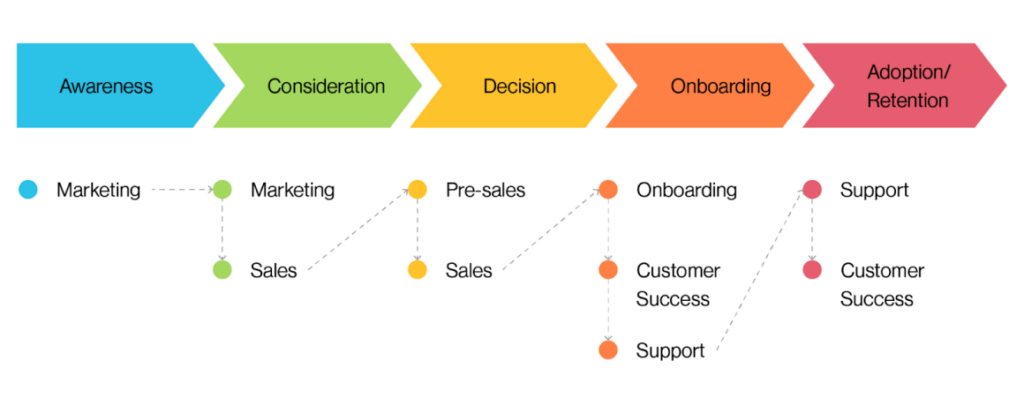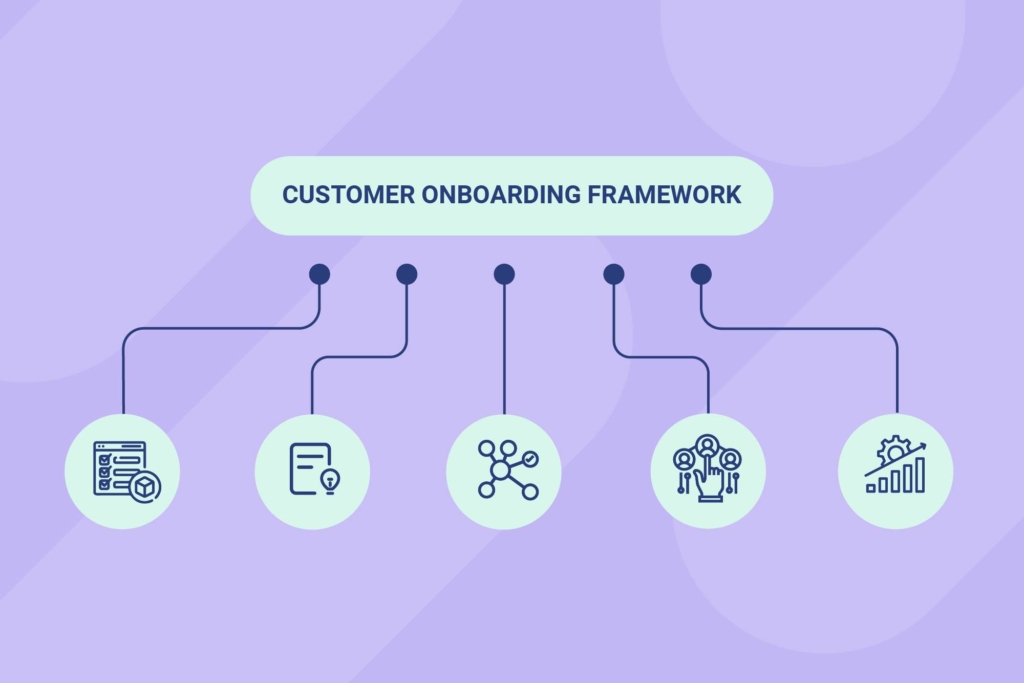How to Create a Seamless Customer Onboarding Process That Boosts Retention
The sale isn’t the finish line—it’s just the beginning. If your onboarding process is clunky, confusing, or inconsistent, new customers won’t stick around long enough to see the value you promised.
A seamless onboarding process builds momentum right after the deal closes. It helps customers feel confident, supported, and aligned with your solution from day one—paving the way for stronger retention and long-term growth.
Quick Takeaways
- A seamless onboarding process builds early trust and directly impacts long-term customer retention.
- Common onboarding mistakes—like poor handoffs and vague communication—can damage the customer relationship from day one.
- Standardizing your onboarding steps while tailoring them to individual customer goals creates a more effective experience.
- Using data to track engagement and time-to-value helps teams continuously improve onboarding and reduce churn.
What Defines a Seamless Onboarding Process?
A seamless onboarding process makes it easy for new customers to get started, understand what to expect, and quickly experience value. It’s not just about sending a welcome email and scheduling a kickoff call. It’s about guiding the customer through every step with clarity, purpose, and consistency.
In B2B, onboarding often spans multiple teams—sales, marketing, customer success, and even IT. A seamless experience depends on strong internal alignment and a clear transfer of knowledge. Everyone involved should understand the customer’s goals, timeline, and key decision drivers.

At its core, seamless onboarding is:
- Predictable: The process is consistent, documented, and easy to follow.
- Personalized: It reflects what the customer actually needs, not a one-size-fits-all template.
- Proactive: Customers don’t have to chase information or support.
- Fast: It accelerates time-to-value and minimizes delays.
It’s both operationally smooth and emotionally reassuring. When onboarding is seamless, customers feel like they made the right choice.
Common Breakdowns That Disrupt Onboarding
Even the strongest sales process can unravel if onboarding falls short. These breakdowns quietly chip away at customer trust and momentum. To build a seamless onboarding process, you need to know what gets in the way.
Here are some of the most common friction points:
Misaligned Handoffs Between Sales and Customer Success
When critical information gets lost in transition, your onboarding team starts from scratch. Without context—like buyer goals, pain points, and decision criteria—it’s harder to deliver a tailored experience. Customers end up repeating themselves or feeling like no one really understands their needs.
Unclear Timelines or Expectations
If customers don’t know what’s coming next—or how long onboarding will take—they’re more likely to disengage. Missed deadlines, vague deliverables, or inconsistent communication can cause confusion and erode confidence fast.
Overcomplicated or Generic Processes
Some onboarding programs are loaded with unnecessary steps, while others are too generic to be useful. Neither approach works. Customers want a process that’s simple, relevant, and focused on their success—not a generic checklist.
Lack of Communication Cadence
Silence is a red flag. If your team isn’t regularly checking in, answering questions, or sharing updates, customers may start to wonder if they’re on their own. Regular, proactive communication is what keeps the relationship strong in these early stages.
Key Steps to Build a Seamless Onboarding Process
A seamless onboarding process doesn’t happen by accident. It’s built with intention. The goal is to deliver value fast, build trust, and make customers feel like they’re in good hands.

Here’s how to do it:
Step 1: Start With the End in Mind
Before you onboard a new customer, define what success looks like. What are their top priorities? What outcome are they expecting in the first 30, 60, or 90 days? This clarity sets the tone and gives your team a clear path to follow.
Step 2: Create a Standardized Yet Flexible Playbook
A strong onboarding playbook provides consistency, but it shouldn’t be rigid. Use it as a foundation and adapt it to meet each customer’s unique goals. This balance between structure and personalization is what makes the process feel both professional and thoughtful.
Step 3: Build a Strong Internal Handoff
When sales closes a deal, the onboarding team should receive more than just a name and email address. Include all relevant notes: pain points, decision drivers, buying timeline, and any promised deliverables. This context helps onboarding teams engage with confidence and accuracy from day one.
Step 4: Use Multichannel Communication
Different buyers respond to different channels. Some want emails, others prefer calls, and some appreciate video or in-app check-ins. Using a mix of communication methods helps ensure nothing gets missed and keeps the experience engaging.
Step 5: Set Milestones With Quick Wins
Break onboarding into a few clear milestones. Early wins—like completing setup, logging in, or attending a training session—create momentum. These small victories reassure customers they’re on the right track and reinforce the value of your solution.
Step 6: Train, Educate, and Empower
Great onboarding doesn’t just guide—it enables. Provide clear documentation, helpful tutorials, and hands-on support. The faster your customer feels confident using your product or service, the stronger their long-term engagement will be.
Leveraging Data to Improve the Onboarding Experience
The more you know about your customers, the better your onboarding process becomes. A seamless onboarding process uses data to inform and improve. When you integrate insights from sales, marketing, and customer success, you can create an experience that feels customized, efficient, and intentional.
Use Intent and Engagement Data
Start with the data you already have. What pages did the customer visit on your website? What content did they engage with? What messaging led them to convert? These clues can help your team personalize onboarding steps to reflect the customer’s actual interests and needs.
Monitor Behavior in Real Time
Track how customers interact with onboarding content, support channels, and training resources. Are they completing tasks? Logging into the platform? Attending scheduled meetings? Gaps in engagement highlight areas where the process might be too confusing, too slow, or off-target.
Measure What Matters
Don’t guess if onboarding is working—measure it. Key metrics might include:
- Time-to-value: How quickly is the customer realizing benefits?
- Onboarding completion rate: Are customers dropping off before the process is finished?
- Engagement levels: Are customers interacting with your team and tools?
These metrics help you continuously fine-tune the onboarding experience so it delivers better outcomes—and higher retention.
How Seamless Onboarding Directly Impacts Retention
Retention doesn’t begin months after implementation—it starts the moment a customer signs the contract. A seamless onboarding process builds confidence early and prevents second-guessing, which is often the root cause of early churn.
Reduces Friction and Prevents Churn
When customers feel supported and see immediate value, they’re less likely to disengage. Seamless onboarding eliminates the guesswork and ensures buyers don’t feel abandoned or overwhelmed after the sale.
Accelerates Product Adoption
The faster a customer understands how to use your solution—and how it solves their problems—the more likely they are to keep using it. Streamlined onboarding increases usage, satisfaction, and loyalty.
Builds Long-Term Relationships
First impressions shape customer perception. If onboarding feels strategic, helpful, and aligned with their goals, customers are more likely to trust your team and stick around for future growth opportunities.
Boosts Upsell and Cross-Sell Potential
Customers who have a smooth start are more receptive to future conversations. By establishing trust early, you create a stronger foundation for expansion—whether it’s additional services, features, or higher-tier solutions.
Create a Seamless Onboarding Process today with Televerde
A seamless onboarding process is one of the strongest predictors of long-term customer retention. When you prioritize clear communication, quick wins, and personalized support, you set your customers—and your team—up for success.
Ready to improve your onboarding strategy? Connect with Televerde to explore how we help B2B organizations create customer experiences that last.


